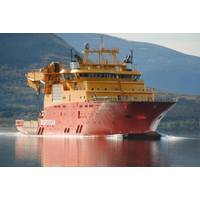
Equinor Hires DeepOcean for Subsea Infrastructure and Cable Repairs
Equinor has awarded ocean services provider DeepOcean a frame agreement for marine services covering subsea intervention and repair contingency for subsea pipelines, structures and high voltage cables for both offshore renewables and oil and gas fields.The agreement is valid for four years, with options to extend it for up to four more years.Geographically, the agreement covers work on the Norwegian continental shelf and internationally for planned Equinor work and for contingency work for the PRSI pool members. The PRSI pool consists of 23 energy companies that cover their offshore pipeline and power
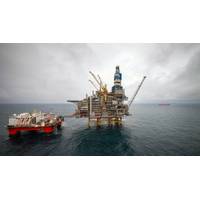
Shearwater to Monitor Production at Equinor’s Two Oil and Gas Fields
once more supporting Equinor in navigating towards the efficient optimization of resources.“Our dedication to providing top-tier seismic technology and expertise will provide Equinor with the insights needed to continue delivering long-term, sustainable value creation from the Mariner and Heidrun fields,” said Irene Waage Basili, CEO of Shearwater.Equinor started production from the Mariner field in 2019 as its first operated development in the UK North Sea. The field is expected to produce oil for the next 30 years.The Mariner field is located on the East Shetland Platform in UK Block 9/11a
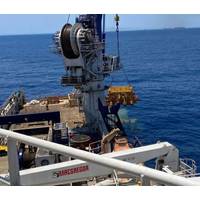
Decom Engineering Enters Australia with Triple Contract Win
into a reusable product suitable for construction projects and other uses, while decreasing carbon footprint and returning value to the asset owner, according to the company."To date our PCR system has processed more than 30,000 tonnes of steel tubulars from surplus prime and decommissioned oil and gas fields and we think that this is an offering which could introduce significant environmental and financial benefits to the massive Australian decommissioning sector," added Conway.Investing in Subsea Decommissioning Pays Off, Decom Engineering Find
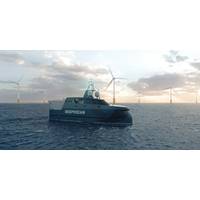
DeepOcean Charters Innovative Unmanned Surface Vessel for Subsea Inspection, Survey Work
crew and ROV operators will be co-located in the same remote operating center.“We see great potential in using the USV technology in combination with existing solutions to reduce cost and maximise the operational and environmental benefits on behalf of operators of offshore renewable and oil and gas fields,” adds Øyvind Mikaelsen.Hybrid propulsionThe USV will be equipped with a hybrid diesel-electric propulsion system and a battery package which allows the unmanned vessel to operate offshore for up to 30 days without charging or refueling.It is estimated that the USV solution can

DeepOcean Deploys Its First Autonomous Drone for Inspection of Offshore Structures
Offshore services firm DeepOcean said Monday it had mobilized its first Autonomous Inspection Drone (AID), which it says "can unlock substantial cost savings for operators of offshore wind farms and oil and gas fields. "The subsea drone has been mobilized on board the Edda Fauna subsea Inspection, Maintenance and Repair (IMR) and Remotely Operated Vehicle (ROV) support vessel."In the coming months DeepOcean will conduct offshore trials for utilizing the AID under one of DeepOcean’s annual inspection campaign for an operator on the Norwegian continental shelf," DeepOcean said.
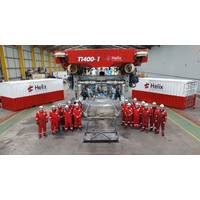
Helix's Newly Acquired T1400-1 Jet Trenching System to be Deployed at Taiwan Offshore Wind Farm
industry service offerings in the region. Our services are centered on a three-legged business model well positioned to facilitate global energy transition by maximizing production of remaining oil and gas reserves, supporting renewable energy developments and decommissioning end-of-life oil and gas fields," Helix said Monday.Helix Books Siem Topaz AHTS for Offshore Wind Work in Taiwa
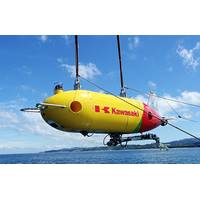
Kawasaki's AUV Used to Inspect Coating Defects on Subsea Pipeline
test was conducted off Awaji Island (Hyogo Prefecture, Japan)Kawasaki has been developing the world’s first AUV with a robot arm for subsea pipeline inspections, named SPICE (Subsea Precise Inspector with Close Eyes), in response to growing demand for subsea pipeline maintenance in offshore oil and gas fields.According to the company, in a 2020 verification test, SPICE achieved stable pipe-tracking performance, demonstrating high capability as a platform for close-range subsea pipeline inspections. Detecting coating defects on subsea pipelinesFollowing this outcome, Kawasaki decided to launch
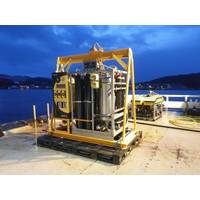
Putting Power on the Seafloor is a Fuel Cell Future
and provide up to 8 kW of steady state power.Teledyne first unveiled the concept in 2018. It’s designed for energy storage requirements of at least 500 kWh or where cold temperatures are a possibility, says Dwight Warnock, Vice President, Teledyne Energy Systems, Inc. “This could be oil and gas fields, to provide an independent, stand-by energy source, but also as a research or observational platform in environmentally sensitive areas. “The Subsea Supercharger emits only water and a small amount of heat making it environmentally friendly and once the system has been recovered, no footprint
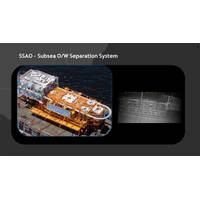
Interview: André Lima Cordeiro, Executive Manager, Subsea Systems, Petrobras
boosting systems. There are multiple drivers, says executive manager of Subsea Systems at Petrobras, André Lima Cordeiro. “For the last 20 years, Petrobras has been using subsea processing and boosting to maximize production and to overcome the challenges on developing offshore oil and gas fields, such as high CO2 production, topside limitations, long tiebacks and cost reduction requirements.”In fact, more than 40 subsea processing and boosting systems have been installed in Brazil since 1994, when an electric submersible pump (ESP) was fitted in a subsea well in the Campos Basin



 February 2024
February 2024





